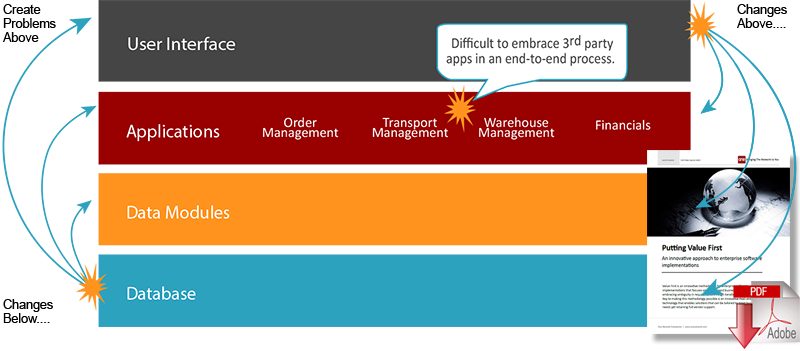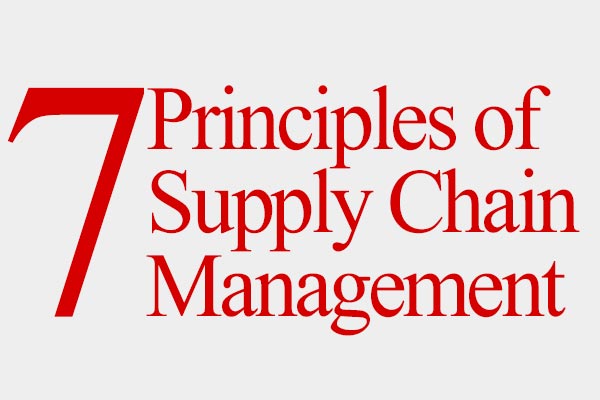The Cloud Comes of Age with Multi-Enterprise Business Networks

CIOs, CTOs and cloud business solution providers engaged in planning, building and deploying cloud solutions have to consider a wide range of cloud platforms and a complex mix of PaaS capabilities.
Adoption of cloud technologies is often driven by the desire to increase collaboration, data sharing and optimization of multi-enterprise or “multi-party” processes.
However, building and delivering multi-enterprise processes remains difficult.
This is primarily due to the Enterprise Resource Planning (ERP) and related solutions that were designed for single enterprise business processes.
Executives are increasingly asking IT to look at the business from the outside in and consider the business ecosystem that affects all participant’s health and growth opportunities.
Multi-Party Business Processes Abound
Common business processes that involve multiple outside parties include:
- Quote to Cash
- Procure to Pay
- Order to Ship
- S&OP
- Demand Forecasting
- Transportation Planning and Management
- Service Performance Monitoring and Predictive Maintenance
Other than accounting-related processes, today most business processes involve collaboration, execution and planning with one or more business partners.
Many companies are painfully discovering that developing and/or deploying these types of business solutions on most cloud platforms brings many of the same problems that traditional ERP and Business Process Management (BPM) solutions encounter.
The Problems Associated with Enterprise Applications
The fundamental problems stem from services and applications designed for use by one enterprise with little or no thought given to processes and transactions that execute across multiple corporations.
This leads to the same old problems encountered with legacy ERP solutions such as:
- Lost revenue opportunity due to system delays and high touch solutions
- Degraded customer service levels due to system latency between cloud and on-premise applications
- Low agility due to the inability to deploy new business models quickly and efficiently
- Reduced ROI due to proliferation of electronic data interchange (EDI) connections and associated development and maintenance costs
- Expensive test cycles due to complex ERP to ERP data translation and increased solution complexity
- High technical debt and expensive customizations
- Low flexibility due to slow and expensive partner onboarding
- Degraded innovation and competitive advantage due to detracting resources to maintain customized solutions
Many IT and software development organizations that have chosen recognized xPaaS cloud platforms are now faced with developing many layers of code and complex development cycles to deliver to just the basic business requirements.
IT organizations and consulting companies that have engaged with cloud providers that emulated traditional ERP concepts on the cloud are still faced with similar cost overhead and delayed deployments.
To patch over the lack of multi-party capabilities and deal with developing custom EDI connections for each trading partner, whole industries of cloud system integration and EDI companies have sprung up.
The Rise of the “Multi-Enterprise” Collaborative Network
Many companies have invested over long periods to establish and improve supply chain business collaboration, yet many processes and flows in the extended network are still done via spreadsheets, emails or point-to-point EDI. However, desired insights in the business network/ecosystem cannot be achieved through ERP and EDI.
Often, 10 or more companies touch a single transaction (suppliers, carriers, 3PLs, banks, governments, insurance companies, customers, consumers, service organizations, etc.). EDI and ERP systems are not able to automate and optimize across this multi-enterprise landscape causing waste and lost opportunity.
Collaboration with business partners on multi-enterprise processes via a business network can create strong competitive advantages and enable new business models. A unique high value aPaaS and SaaS business network platform has emerged designed to enable multi-party (more than one corporation) business processes that enable companies to deliver transformative solutions and avoid these costly issues.
Consumer-Driven Business Networks Enable High-Value Innovative Solutions
A multi-party cloud platform that is designed to allow parties to collaborate on the same shared objects using shared applications is a unique approach to providing new and innovative business solutions. Multi-party aware services and applications deployed on a “business network” are enabling a new class of innovative solutions.
A business network is similar in spirit to the concept of a social network such as Facebook. Social applications deployed on Facebook can tap into a large network of individuals and social communities that gives the applications meaningful relationships to leverage and enable features or insights that would be meaningless if deployed on a cloud platform lacking a social network.
Similarly, a business network provides applications and services with the fabric required to simplify traditional business processes, achieve higher levels of optimization and enable new innovative solutions that leverage trading partner communities and relationships.
Deploying advanced learning algorithms onto a business network that stores trading partner transaction history and consumer preferences and events can reveal new trends, answers and innovative business solutions.
Extensible multi-party SaaS applications designed for shared execution across corporations enables efficient tailoring of solutions that meet industry specific needs. This contrasts with traditional SaaS applications, such as SalesForce CRM or NetSuite ERP which exclude third parties from fundamentally extending their existing applications and are built primarily to serve one corporation per application instance.
Integrated planning and execution across multiple enterprises is fundamental to optimize decision making, streamlining process performance and deliver value for all parties. The business network allows partners to connect the processes between partners to provide common visibility, continuous multi party workflows, analytics and optimization of common goals.
Transformation is realized when companies realize they can turn off inefficient internal business processes and turn on new shared processes to simplify transactions and interoperability.
Companies that can respond intelligently to individual consumer behavior and predict local and aggregate consumer trends will enjoy improved customer service levels and add quality revenue streams.
Advanced algorithms that learn and adapt to both consumer behavior and provide optimized decisions based on common business network goals are available today providing competitive advantages to forward-thinking organizations spanning logistics, automotive, food services, military, high tech, life sciences, CPG and industrial verticals.
The majority of business processes are, in fact, shared processes across multiple enterprises. As companies realize the value of using systems that are designed to support this reality, they will enjoy simplification and efficiency gains that will drive the next wave of economic productivity.
Note: A version of this article first appeared on iCrunchData.com “Why You Should Leverage Multi-Enterprise Business Networks”.
Why Commercial Off-The-Shelf Software Packages Have Failed
For decades, companies implementing enterprise software for Enterprise Resource Planning (ERP), Supply Chain Management (SCM) and other related areas had to choose between two approaches: Either purchase a Commercial Off The Shelf (COTS) software package; or, go the Custom Solution route to build and maintain a bespoke solution.
Unfortunately, both choices are infamous for running over-budget and typically fail to deliver promised value on a sustained basis.
COTS systems have fallen far short of expectations in reducing overall cost of ownership for at least three reasons:
- One-Size-Fits-None: These systems were based on the notion that a single integrated data model built for a single enterprise could drive a “best practice” approach to all industries around a multitude of business processes and capabilities. Unfortunately, the phrase “Best Practice” was coined by vendors, who were not offering a true “best practice” for that customer/industry. In reality, best practice was being used as a definition of how the system (COTS) was designed to work. The vanilla “one-size-fits-all” design actually does not fit anyone well and requires enhancements, customizations and extensions.
- Complexity and Feature Creep: As the vendors drove more and more capability into the system, the system became more complicated and harder to use. For the average user, the system was riddled with capability they did not need and diminished usability. Users consistently complain that the number of screens necessary to execute a workflow is far greater than what they need, and the amount of setup and administration of the system was quite onerous and labor intensive.
- Inflexibility of the underlying architecture: IT organizations were initially enthusiastic about the COTS concept because of the expectation that the reduction in integration effort would greatly reduce their overall implementation efforts and costs. Unfortunately, studies have shown that user costs and efforts have actually increased due to the inflexibility of these systems and the cost of integrating into them.
Download: An Innovative Approach to Enterprise Software Implementations
Article Topics
One Network Enterprises News & Resources
Blue Yonder announces an agreement to acquire One Network Enterprises for $839 million Blue Yonder Acquires One Network Enterprises for $839M Companies Need to Develop New Innovative Approaches to Supply Chain Design How to Improve Cost of Goods Sold Horizontally Across the Supply Chain How the Global Pandemic Accelerated Supply Chain Visibility, Digitalization, and Automation AI and Data, the Future of Supply Chain Management AI and Supply Chain Problem Solving More One Network EnterprisesLatest in Technology
Spotlight Startup: Cart.com is Reimagining Logistics Walmart and Swisslog Expand Partnership with New Texas Facility Taking Stock of Today’s Robotics Market and What the Future Holds Biden Gives Samsung $6.4 Billion For Texas Semiconductor Plants Apple Overtaken as World’s Largest Phone Seller Walmart Unleashes Autonomous Lift Trucks at Four High-Tech DCs Talking Supply Chain: Procurement and the AI revolution More Technology














